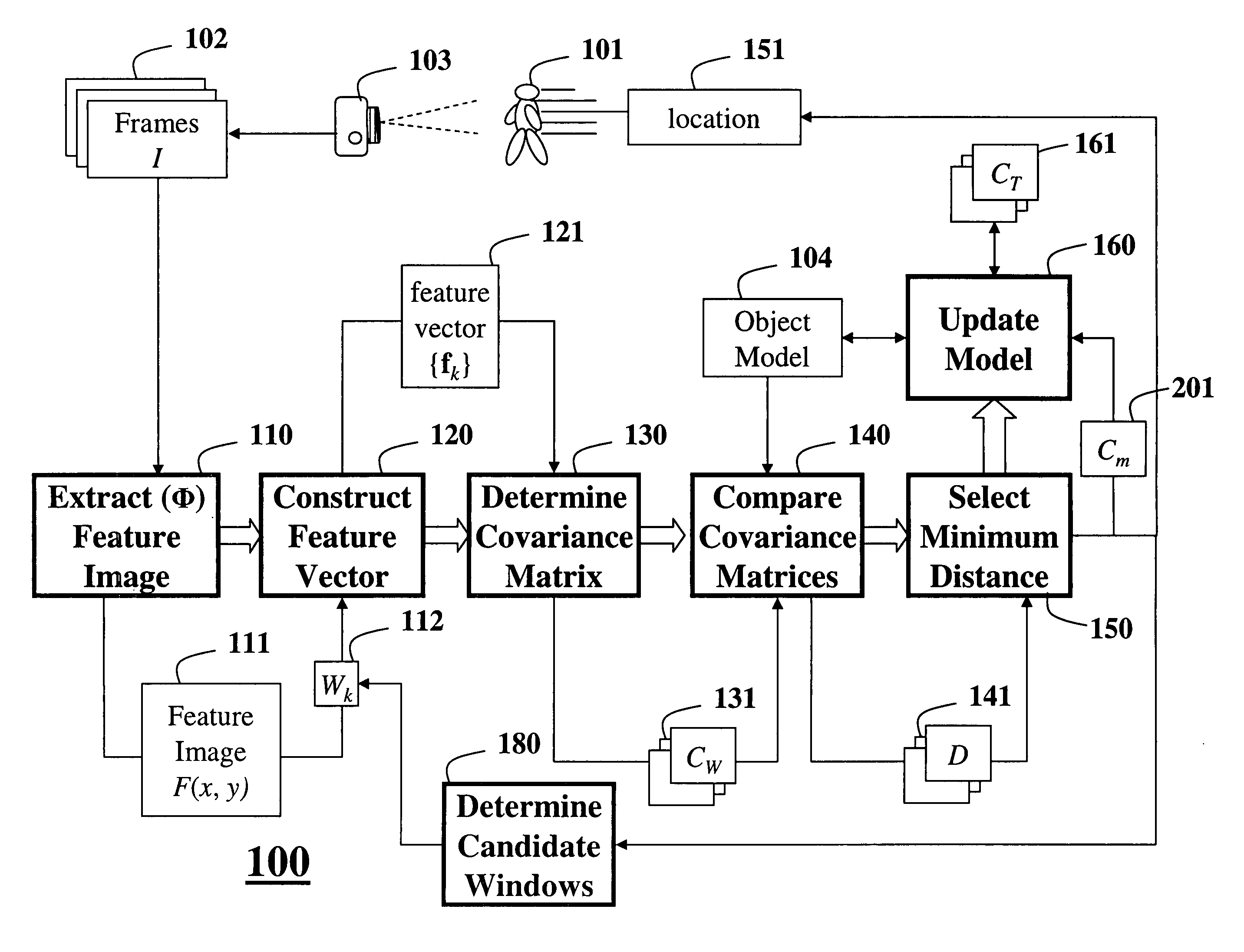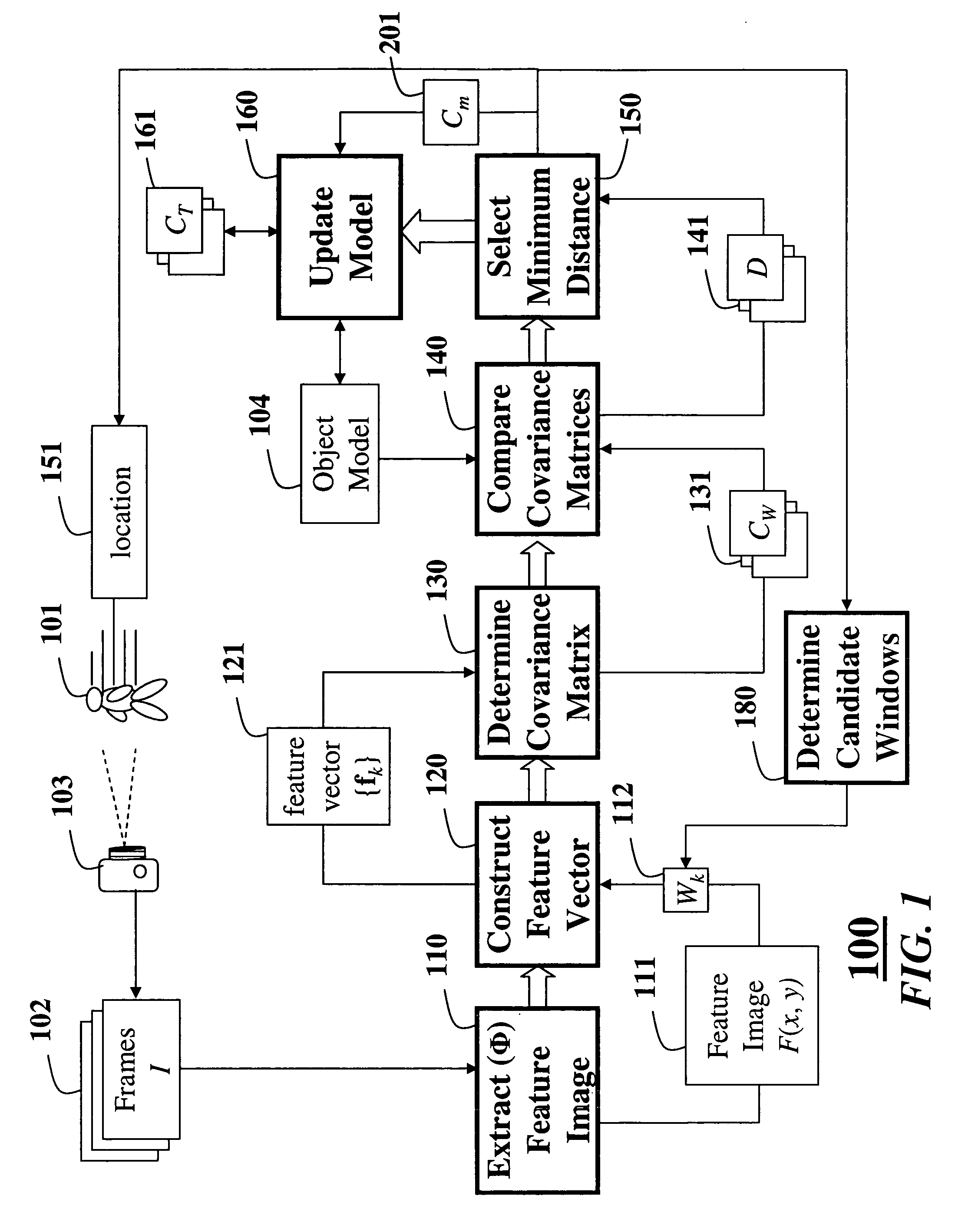Method for tracking objects in videos using covariance matrices
a covariance matrix and video technology, applied in the field of computer vision, can solve the problem that the method is not restrained to an estimation of a posterior probability function, and achieve the effect of accurately detecting non-rigid, moving objects
- Summary
- Abstract
- Description
- Claims
- Application Information
AI Technical Summary
Benefits of technology
Problems solved by technology
Method used
Image
Examples
Embodiment Construction
[0023] Covariance-Based Object Tracking
[0024]FIG. 1 shows steps of a method 100, according to one embodiment of our invention, for tracking a moving object 101 in a sequence of frames 102 or video acquired by a camera 103. The steps shown are repeated for each frame 102. We presume we have a model 104 of the object 101. The model is in the form of a covariance matrix constructed as described herein. The initial model can be obtained, for example, by localizing the object in the first frame using manual or automated object locating means. Thereafter, the model is updated 160 for each frame 102 as described herein.
[0025] For each frame 102 in the video sequence, we construct 110 a feature image 111. For various regions or windows W 112 in the feature image 111, we construct 120 a set of feature vectors 121. Corresponding covariance matrices 131 are determined 130 for the set of feature vectors 121. We compare 140 the covariance matrices 131 with the covariance matrix of the current ...
PUM
 Login to View More
Login to View More Abstract
Description
Claims
Application Information
 Login to View More
Login to View More - R&D
- Intellectual Property
- Life Sciences
- Materials
- Tech Scout
- Unparalleled Data Quality
- Higher Quality Content
- 60% Fewer Hallucinations
Browse by: Latest US Patents, China's latest patents, Technical Efficacy Thesaurus, Application Domain, Technology Topic, Popular Technical Reports.
© 2025 PatSnap. All rights reserved.Legal|Privacy policy|Modern Slavery Act Transparency Statement|Sitemap|About US| Contact US: help@patsnap.com



